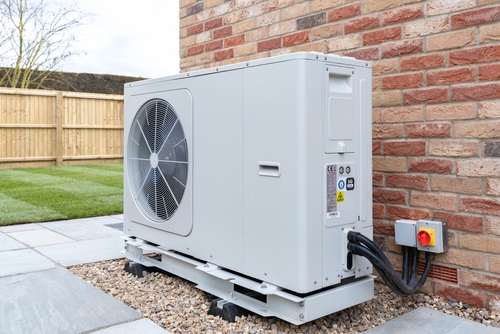NREL publishes research on benefits and challenges of heat pumps

Research by the U.S. Department of Energy’s National Renewable Energy Laboratory (NREL) found that the high cost of installing heat pumps put them out of reach for most Americans., despite their benefits.
The findings, published in the journal Joule, examines the costs and benefits of air-source heat pumps. The research is based on simulations of 550,000 statistically representative households. The analysis considered such factors as the performance of different heat pumps and whether additional steps to upgrade the insulation had occurred.
The analysis revealed that between 62 percent and 95 percent of U.S. households, depending upon heat pump efficiency, would see a drop in their energy bills by using a heat pump. Improving the weatherization of a home, by installing better insulation, for example, would increase the range to between 82 percent to 97 percent. Another benefit of heat pumps is that they provide both heating and air conditioning.
However, despite the benefits and savings, the high installation costs make heat pumps financially feasible for a smaller portion of households.
“There are millions of people who would benefit from putting in heat pumps, and there are incentives made available through the Inflation Reduction Act, both tax credits and rebates, that millions of households can benefit from,” said Eric Wilson, a senior research engineer in the Buildings Technologies and Science Center at NREL and lead author of the paper, “Heat pumps for all? Distributions of costs and benefits of residential air-source heat pumps in the United States.” “But what this paper shows is that there are still millions more households for whom the technology is still pretty expensive, and we need work to bring down the cost of installing heat pumps.”
Along with Wilson, the report was co-authored by Prateek Munankarmi, Janet Reyna, and Stacey Rothgeb, all from NREL. In addition, Brennan Less from Lawrence Berkeley National Laboratory also helped as a co-author.
The researchers calculated that heat pumps would cut home site energy use by 31 percent to 47 percent on average, depending on its efficiency level. That range would be 41 percent to 52 percent when combined with building upgrades such as better insulation. The big difference between energy savings and energy cost savings is because natural gas prices are much lower than electricity prices on a Btu basis in many parts of the country.
More specifically, for the 49 million homes that use electricity, fuel oil, or propane for heat and have air conditioning, 92 percent to 100 percent of homes would see energy bill savings. The median savings would be between $300 to $650 a year.
The researchers also found that installation of a heat pump prompted greenhouse gas emissions to decline in every state. The drop was especially large when it replaced a heating system that had been powered by fossil fuels. Nationally, heat pumps would cut residential sector greenhouse gas emissions by 36 percent to 64 percent, they found.
The research was funded by the Department of Energy’s Building Technologies Office.
